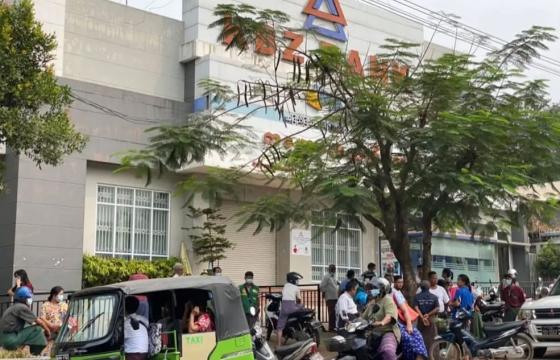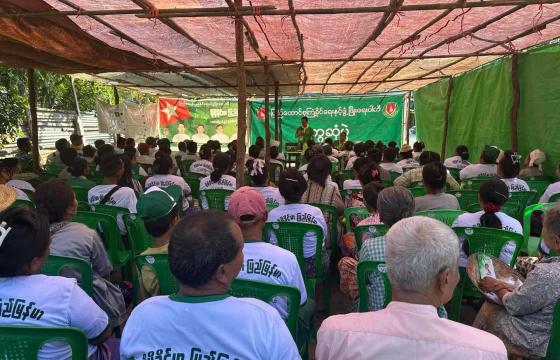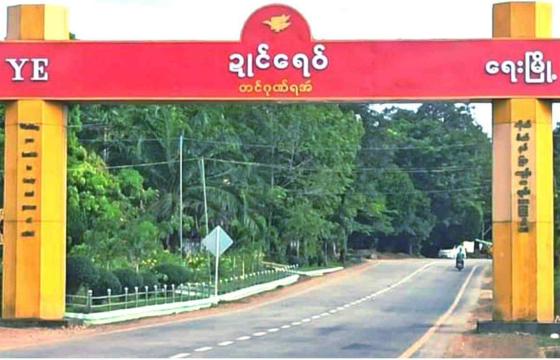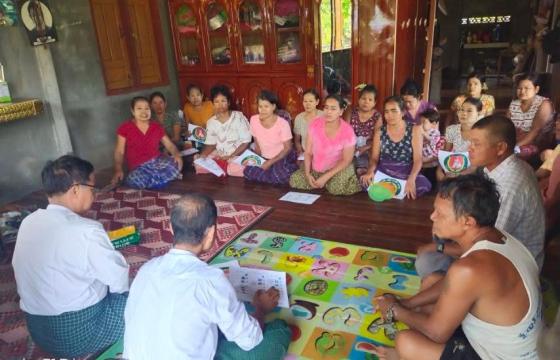Introduction:
Mon National Day commemorates the founding of the last Mon Kingdom Hongsawatoi, or Pegu, as it is also known. Hongsawatoi was founded in lower Burma in 1116 Buddhist Era (573 A.D.) on the first waning of the moon in Maik [month] of the Mon lunar calendar. Mon Civilization had existed in the region for centuries prior to the founding of Hongsawatoi, even before the Buddha Gotama attained enlightenment. However, Mon people take pride in the last Mon Kingdom, and thus Mon National Day is celebrated on the first waning of Maik [month] every year to honor its founding.
In Burma (Myanmar), the eight major national ethnic groups each celebrate respective National Days. Every National Day is born from a political history. Mon National Day is no exception. Its political significance lies in the Mon people’s movement for self-determination.
Since the 11th Century, Mon and Burman ethnic groups had fought to control territory in what is present-day Myanmar. The Mon permanently lost control to the Burmans in 1757 when they attacked the Mon Kingdom Hongsawatoi in Pegu (Bago). The Burmans ruled over the Mon until the beginning of British occupation on January 1, 1886. During this era of colonization, the British, French, Spanish, Dutch and Portuguese competed for control over territory in Asia. The French ultimately occupied Lao, Cambodia, and Vietnam. The British had colonized present-day India, Sri Lanka, Bangladesh, Pakistan, Malaysia and Singapore before it invaded Burma. The British territory was known as “an empire in which the sun never sets” because it was always daytime somewhere in the vast territory.
However, the Japanese began to compete with the British for colonial power in the Asia region with its incursion into Russia and China in 1905. With the Japanese Empire’s increasing anti-British influence in the region, anti-British sentiment grew in many small nations in Southeast Asia.
In Burma in 1906, student activists founded the Young Men’s Buddhist Association (YMBA) based on Buddhist principles. The organization campaigned for preserving Burmese language, cultures, and heritages in resistance to British colonization, thus planting the seeds for the country’s nationalism. In 1920, a few hardliners went one step further and founded the General Council of Burma Association (GCBA), a political party aimed at achieving self-governance for Burma. On December 5, 1920, student activists in Rangoon (Yangon) staged protests against unfair British-imposed university regulations. A majority of the population from around the nation supported the student’s movement. The demonstrations ultimately led to a victory for the students who gained the right to learn and teach Burmese language and open Burma’s National School. A few prominent Mon activists participated in the demonstrations, most notably Nai Thar Din from Pegu, Nai U Lu Pe Win (former Minister of Old Scripts), and Nai Chit Thaung (Former Minister of Cultures). As a result of the victory, December 5, 1920 was the day chosen for Burma’s National Day.
Mon Leaders in Burmese Politics:
The 1920s brought a wave of Burmese political movements that lasted until 1945. A few anti-British activists were Mon. Although they did not publicly announce it in print, they had a single goal of gaining independence for Burma. The former GCBA President and later, Acting Governor of Burma Sir J.A Maung Kyi and the late leader of GCBA U Chit Hlaing are the important Mon political leaders in Burma’s modern political history. According Bo Kyoke (General) Aung San, 3,000 Mon troops fought alongside 5,000 Burman troops against the British army in Burma’s struggle for independence. However, the Mon people did not have a political organization leading up to Independence, and Burman leaders did not acknowledge the role Mon activists played in Burma’s independence.
When the Mon people’s contribution to the independence movement was ignored in 1945, Mon political leaders united to form a new Mon political organization, The United Mon Association (UMA). Mon U Pho Cho, a former lecturer at Rangoon College served as UMA President and Mon Ba San served as General Secretary. The organization included seventeen executive members and had a number of important patros. These honorary patrons included Sir J.A Maung Kyi, Sir U Thon (Businessman), U Ba Hlaing (Lawyer), Sun U Nyunt (Sun Company), U Ohn Maung (U Pho Kyan Company), and U Tun Pe.
Formation of United Mon Association:
The United Mon Association (UMA) campaigned to not only promote Mon language and culture but also educate local Mon youth about protecting their political rights. The UMA led a public two-day seminar in October of 1947 at Kamawuk Village, Mudon Township (later Mon State). Over 20,000 people attended. Three resolutions were passed at the seminar:
- To submit a proposal for the formation of Mon State (Federal Mon State) to the caretaker government of Burma under the leadership of the Anti-Fascist People’s Freedom League (AFPFL)
- To form a Mon Youth Progressive Organization.
- To designate the founding day of the last Mon Kingdom Hongsawatoi as Mon National Day.
National Day was was established with the hopes of unifying the Mon people around a non-violent movement that called for a new Mon State within the Union of Burma.
A second public forum was held in Wa Dott, a Mon village on Khamine Island near Moulmein (Mawlamyine), the capital city of Mon State. According Rev Palita, a Mon historian and writer, Nai Pho Oung chaired the forum. At the meeting, the resolution that Mon National Day was to be celebrated on the the date of the founding of the last Mon Dynasty, Hongsatatoi was announced. Rev Kusala (from Kuan Yeik), Nai Htaw Ah (from Kamawuk), Nai Pyun (Kamawuk), Nai Chan Mon (Kamawuk), Nai Manoit Rot (Kamawuk) and Mon Pho Cho (Rangoon) attended the public seminar. These seven Mon leaders were instrumental in holding the Mon National Day celebrations at Wa Dott village and organizing other local MND celebrations.
According to Mon political leader Nai Ngwe Thein’s 31st Mon National Day Address given at Choi-leik-khon (in old Medical University No 1), the UMA held a public forum at Ba Loak Monastery in Pa Nga Village and the Mon people celebrated the first Mon National Day in 1948. There was also a celebration held at Moulmein Hall, at the southern path of Kyeiklagon (Shwedagon) pagoda in Rangoon, according the writer Mamaka (Thudedee).
Riding on the political success of Burma’s independence, a Mon political movement emerged advocating for Mon rights. The Mon Freedom League (MFL), a UMA affiliate political organization, was created in 1946 to engage with the Burman political elites. Wanting to present as a single united political front, Mon leaders consolidated these two organizations to form the Mon National Affairs Council (MNAC). Although the Mon political leaders continued to advocate for their political rights and contributed their leadership in the AFPFL caretaker government under the U Nu administration, Burman political elites rejected claims of Mon self-governance made by the Mon leaders. According to Burman political elites of the U Nu government, “The Mon and the Burman are one race and the Mon are not entitled to additional rights.” The Burman political elites subjected Mon political groups to their “Burmanization Policy” and monopolized national affairs. Under this policy, the Mon were banned from holding Mon National Day, and the Mon political elites had no way to organize the Mon community to achieve their political goals. As a result, Mon political activists shifted their tactics from political participation in urban centers to armed resistance in the jungle.
The armed resistances:
Burma gained independence from the British on January 4, 1948. However, the post-Independence Burman government in power rejected all proposals submitted by the Mon leaders, such as proposals for Mon self-autonomy, schools taught in Mon language, and Mon representation in Mon State government. Thus, leading Mon politicians and Mon youth joined the Armed Resistance. Meanwhile, other non-Burman led groups, such as Karen and Arakhan ethnic political groups, and Burma’s Communist Party or BCP, left urban centers and formed armed groups in rural and mountain areas to advocate for their own rights. Facing enormous internal political instability and armed struggles by the Arakan, Karen and Mon (as well as BCP), the Government under U Nu formed a “Commission of Enquiry” to create respective Arakan, Karen and Mon States. However, the Nu government passed a resolution that only Karen people were entitled to form a new “state” and the Arakan and Mon were not entitled to similar new states. The fact is, the Karen were granted their own state because the Nu government felt threatened by the Karen National Union’s (KNU) armed forces. The other two groups, Arakan and Mon had very limited troops on the ground and posed no real threat.
Instead of creating a new Mon State, the Nu Government appeased the Mon people by creating the annual festival in Moulmein “Celebrating Mon Cultures”. The festival was very similar to other state-sponsored events such as Union Day and Independence Day. The Mon Cultural Festival began in 1953 at Mine Dar stadium in Moulmein. The event included a variety of activities including a Mon literature contest, Mon poetry writing contest, and traditional sporting games. There was also a Burman drama contest for the festival in later years. Each major city in Mon territory, such as Sadhom [Thaton], Pegu [Bago]and Lagon [Rangoon/Yangon], held the festival annually for three days and three nights. Although Mon people were allowed to hold Cultural festivals, the celebration of Mon National Day was still not officially acknowledged by the Nu government. Those who held and Mon National Day events could be punished locally and nationally by the authority.
Campaign for formation of Mon State:
The current Union of Burma is comprised of territory that historically and culturally belonged to non-Burman ethnic groups for many years. The geopolitical landscape of Burma is extremely complex. During a parliament sitting in the February and March of 1962, political tensions reached their peak in the post-independence period when representatives of the Arakan, Karenni, Karen, Kachin, Chin, Mon, and Shan ethnic groups proposed to form a genuine Federal Union. In response, General Ne Win, chief of staff of the Burmese Army, seized parliamentary power on March 2 and detained all MPs and leaders of non-Burman leaders, including U Nu, the acting prime minister of the AFPFL government. Political debate and parliamentary sitting was tarnished after General Ne Win assumed power. Under General Ne Win, the Mon Culture Festival disappeared in Mon territory and only the isolated Mon villages under the control of Mon armed resistance organizations could hold the Mon National Day.
Regardless of the constitution, in reality, the Burman political elites and the military officials controlled all administrative, legislative, and judiciary power in the Union of Burma. In fact, non-Burman ethnic groups were discriminated against in all aspects of political life for many decades under the oppressive regime of General Ne Win and his political elites. Soon after he assumed the power, Gen. Ne Win formed the Revolutionary Council comprised of hand-picked politicians and his former allies in order to maintain control in the country.
He then formed the Burmese Socialist Programme Party (BSPP) under his directive to run the nation and abolished all other civilian social and political organizations. Although he was able to control political opposition in urban areas, his government was unable to influence border-based armed and anti-government political movements. Both anti-government armed and democratic forces in border areas progressively campaigned against his government, both locally and nationally. Under the Gen. Ne Win socialist government, the country was listed as a poor or under-developed nation by the United Nations, and the size of anti-government armed organizations dramatically increased in border areas.
Ne Win’s socialist administration had no clear policy but he appointed a few civilians to draw a new constitution at the beginning of 1972. The new constitution was amended on January 3, 1974 without a popular vote. Only the military-led party was allowed to run in the election under the new constitution. The party leaders were selected from the military and the representatives were selected internally. People’s votes were not counted in a free and fair election. With the hopes of reducing the Mon insurgency movement in lower Burma, the new socialist government allowed Arakan and Mon people to create separate respective states in 1974. However, local Mon people and Mon political parties (New Mon State Party and Mon People Front) still had no legal power to administer Mon national affairs. Additionally, the Mon people had few rights to teach and read Mon language other than in the monasteries and a few local public schools.
Mon Language and Culture Campaigns:
The Mon people as well as other non-Burman ethnic groups engaged in social and cultural activities under strict surveillance of the military-led socialist government. A few Committees for Language and Literature of the non-Burman people have been formed at universities. The Committee for Mon Literature and Culture was established at Rangoon University, Moulmein College in 1986 and Mon students at Inn Wa and Ye Zin also established a Committee for Mon Literature in later years. The Literature and Cultural campaigns transformed local towns and major villages in later years. The local Mon civilians formed “Working Committees” under the leadership of senior Buddhist monks. The Mon political leaders campaigned to celebrate “National Day” with a traditional event of making Mon Cake or “Yar-hu” on the full moon day of Mide in the monastery while they recalled the history of the Mon people and the political situation of the country. However, the military-led socialist government banned any “National Day” activities that could inspire local people to struggle for self-determination in Monland.
The Rise of the New Mon State Party:
The New Mon State Party (NMSP) has freely celebrated Mon National Day and Mon Revolutionary Day in liberated areas since 1972. The main celebration has taken place at Three Pagoda Pass, a village on the Burma-Thai border near the NMSP Headquarters. The event has gained public attention in border areas where a few foreigners, including the Mon people from Thailand, have visited. Since 1978, the Mon from Thailand or Thai-Mon increasingly participated in the National Day celebration and donated to organizations helping displaced people living in the jungle. The celebration was held annually at Three Pagoda Pass for over ten years. However, the last popular event took place in 1989, before NMSP and its armed wing the Mon National Liberation Army (MNLA) were attacked by government troops.
After the socialist government acknowledged a “Mon State” in the Union of Burma in 1974, the Mon people in Mon State quietly held Mon National Day celebrations in their local towns and villages. However, Mon community leaders had to have permission from local authorities or commanders for the public events. Speeches and printed papers had to be translated into Burmese for approval before they were released to the Mon public. Generally, local authorities or commanders rejected requests made by local Mon community leaders. Authorities justified their decisions by claiming a public event provided an opportunity for local Karen and Mon insurgent groups to attack. However, local community leaders and Buddhist monks maintained good contact with the general public for an annual celebration of Mon National Day in Mon villages. Former Brigadier Tin Oo, head of Burma Intelligence, was a Mon national who supported the celebration of the National Day in 1978 at Thein Phyu stadium in Rangoon. The celebration was also supported by the Rangoon-based Mon community and other Mon scholars until 1983. The event grew in popularity, achieving a status comparable to that of Union Day. The most popular events would occur at Mine-dar stadium in Moulmein, the capital of Mon State.
The Ne Win socialist government accused Brigadier Tin Oo of corruption in the 1980s. He was jailed, and his allies were arrested, dismissed, or demoted in the ranks. The celebration of Mon National Day both in Rangoon and Moulmein lost support without senior Mon officials in the government. However, local Mon villagers continued to hold small events around Mon State. The Burman political elites believed that the growing Mon political movement was a threat to their monopoly of power in modern Burmese politics.
The Mon politics and the cease-fire agreement:
The leading Mon armed resistance organization, the New Mon State Party and its armed wing, the Mon National Liberation Army agreed to cease-fire in 1995, after thirty-seven years of armed struggle. Although the NMSP and MNLA did not achieve its political objectives, the party reached a ‘Gentleman’s Agreement” with its former enemy, the military-led government. With new business permits, the party has more access inland for traveling and business activities, but the large celebration of Mon National Day at Three Pagoda Pass is no longer allowed. The NMSP is only able to hold major events in isolated places where displaced people and refugees settled like Halockhanee and Kun Nee village on the northern part of Ye River.
Conclusion:
The Burman authority has attempted to “burmanize” or forcefully assimilate the Mon into dominant Burman culture, thus suppressing Mon culture. Even the celebration of Mon National Day was not freely permitted in urban and major rural Mon villages until the last decade. The Mon community and political leaders are banned from expressing their opinions and concerns on national political affairs. Unless the Mon people gain legitimate political power, the Mon community cannot freely celebrate their National Day in their homeland. The Mon people and Mon National Day are like two sides of a coin that can never be separated.
The End:
Ref: A Mon National History Booklet (1999), Mon Language Text, Printed by Australia Mon Association, (Canberra), Australia
Translated and Compiled by: Banya Hongsar (Canberra)
Reported by: Layehtaw Suvannabhum







